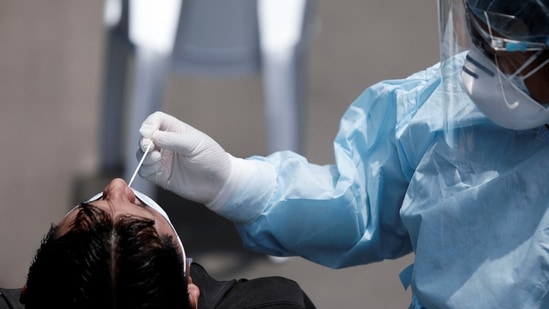Variant watch: Omicron likely evolved in mice, say Chinese researchers
The Omicron variant of the Sars-CoV-2 virus may have evolved within mice and jumped back into humans, according to new research by scientists from the Chinese Academy of Sciences
The Omicron variant of the Sars-CoV-2 virus may have evolved within mice and jumped back into humans, according to new research by scientists from the Chinese Academy of Sciences.

The origins of the variant is among the key questions of research into the coronavirus right now, with implications for the future of the pandemic.
Scientists have till now considered three possibilities – that it evolved in a population with sparse genome testing over a period, or it kept mutating in an immuno-compromised patient with a prolonged infection, or it is the product of reverse zoonosis, that is, it jumped to infect an animal and jumped back into humans.
At present, several scientists have leaned towards the second scenario, since at least one variant of concern (VOC), Alpha, is very likely to have had such an origin.
The report by the Chinese scientists, published in the Journal of Genetics and Genomics, finds the third scenario to be likely because of three reasons.
First, they calculated that the coronavirus naturally evolved at a rate 0.45 mutations a month, including all the other VOCs. The number of mutations in the Omicron variant, however, meant that it would have had to evolve at three times the speed, at 1.5 mutations a month, which did not appear to be the natural rate of evolution within human hosts.
Second, and most crucially, they found that the molecular nature of mutations in the Omicron variant when it first was detected in humans was not the same as when the coronavirus evolved within humans. The mutations, however, were consistent evolution in animals, in particular mice.
Third, they found the closest relative of the Omicron variant, two B.1.1 family viruses, where last seen in May 2020. Till that time, the mutations in those two viruses were on expected lines.
In essence, then, it meant that Sars-CoV-2 took a remarkable evolutionary leap by being able to infect mice, and continued to evolve within the rodent for over a year, before picking up traits to be able to infect humans, the scientists said.
They wrote that their findings suggest Omicron’s progenitor “experienced a reverse zoonotic event from humans to mice sometime during the pandemic (most likely in mid-2020) and accumulated mutations in a mouse host for more than one year before jumping back to humans in late 2021”.
This is a scenario that has long been talked about by molecular biologists. Previously, scientists have found that minks in a farm in Denmark were infected with Sars-CoV-2 by humans, and they passed the virus back to some humans.
The Chinese scientists also say that the virus could have come to be through another mechanism, by a recombination of the human variant with that of an animal variant, possibly in an animal host.
The findings are consistent with some of the other studies that have been published recently. On January 6, this column reported two studies, one by researchers from University of Amsterdam who found that Omicron had landed so far from the evolutionary tree of the coronavirus that it created almost a distinct “antigenic cluster”, and another by the Imperial College of London, where researchers found the variant now was able to infect domestic poultry, horseshoe bats, and mice.
It also fits in with what we are seeing globally – the Omicron variant loses a very significant trait of the Sars-CoV-2: the ability to thrive in the lungs. Without it, the virus is significantly less dangerous, even though it has picked up traits that make spread faster than any other variant.
These findings reinforce the big uncertainty that now lies ahead: the variant can now evolve in any direction, and it seems to have become better at infecting even more animals, thereby expanding the reservoir of hosts where it can keep taking evolutionary short-cuts.
The Chinese scientists allude to this. “Humans represent the largest known reservoir of Sars-CoV-2, and frequently come in contact with other animals, including livestock animals, pets, or wild animals that invade homes searching for food and shelter,” they said in their conclusion.
“Given the ability of Sars-CoV-2 to jump across various species, it appears likely that global populations will face additional animal-derived variants until the pandemic is well under control. Our study thus emphasises the need for viral surveillance and sequencing in animals, especially those in close contact with humans”.






